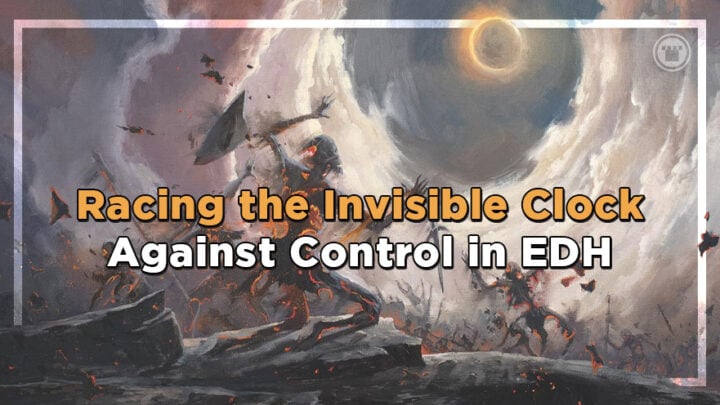Casual games of Commander can be a minefield when it comes to politics, especially when you’re playing against control or combo decks that operate from the hand. If you can’t see anything incriminating in play, how do you keep them in check?
Sometimes, deciding when to go hard against a control deck is seemingly impossible in casual games of Commander. Are they mana screwed, or drawing badly? Or are they just biding their time, waiting for a chance to strike? This isn’t so much of an issue when it comes to more competitive games or playgroups where decks are known quantities; if you’ve figured out a deck that commits less to the board, you already know the “clock” you’re on when the game starts. However, when playing against newer decks, or against players you’re unfamiliar with, it can be tough to figure out when to point your guns starboard and open fire.
Know Thy Enemy
I promise that the title of this section is as literally Sun Tzu as we’re going to get; that ground has been heavily trodden already. That said, knowing when to make a move in Commander is absolutely about knowing your enemy.
Even if you play EDH 24/7, you’ll never have perfect information, so we use heuristics and experience to guide us in evaluating the decks across from us. This can manifest in negative ways at times, especially when players sit across from a Korvold or Muldrotha or Kenrith deck. But we’re all empirical learners, and bringing knowledge into a match-up is only natural and to be expected.
Most often, prior knowledge tells you what is a keepable hand, and what kind of game you can expect, and when you’ll start to feel pressure. The thing is, not all Commander decks approach games on the same vector, and some of those decks pack win conditions and play patterns that will be unfamiliar to you.
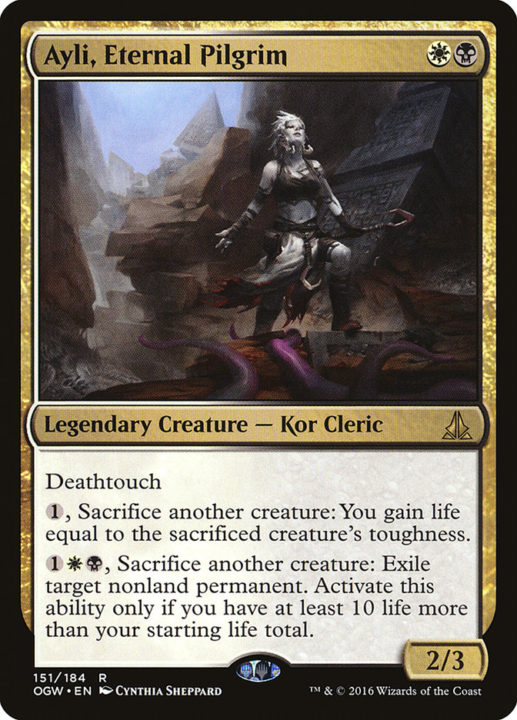
Take Ayli, Eternal Pilgrim. I have a soft spot for her, but one frustration when playing her is that people aren’t shy attacking me to keep me away from 50 life. While they’re not exactly wrong to do so, there are times when it feels like overkill. Sure, the ability is good, but it’s not game-winning. There are countless games I’ve been in where other lifegain decks or other controlling decks receive less pressure. The psychology of the situation is that there is a clear and concise goal across the table: keep that deck under 50 life. People often stop at this level of thought because, whether they know it or not, limiting the amount of decisions you have to make is one of the main strategies to winning a game of Magic.
Once a player has “solved” an issue, they rarely come back to it willingly, as it frees up brain power for the rest of the game. So, while I can be a little grumpy about it when I’m not the threat, it’s to be expected.
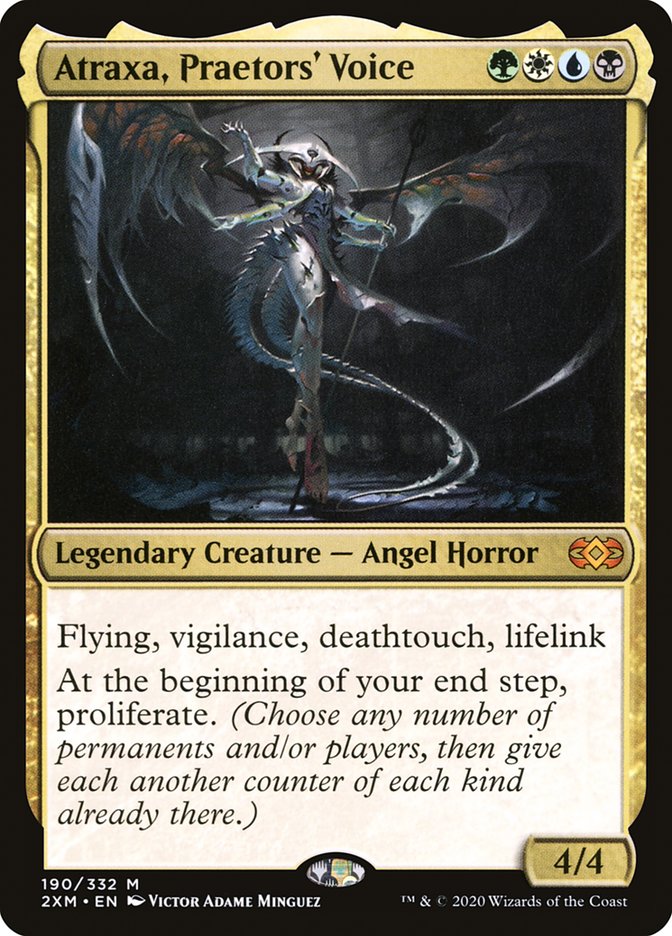
Other more powerful decks present clear heuristics, too. Atraxa Superfriends involves keeping Atraxa off the table and attacking planeswalkers with all you have. +1/+1 counters decks with a Helix Pinnacle or Simic Ascendancy present a very real clock. Elfball decks that amass mana for a Craterhoof Behemoth or Torment of Hailfire must be board-wiped. A Voltron deck has to hit 21 damage, and you can very easily calculate how much breathing space you have.
All of these approaches generate shortcuts that ease the mental load. So when a permanent like Ayli presents a clear outcome, players often simplify that thought process: if the deck is never above 50 life, they don’t have to worry about it. Doubly so when Aetherflux Reservoir requires that much life, too!
While using these heuristics can help you approach a game of Magic, it can be harder to figure out how to play against control or combo decks whose win conditions aren’t as obvious. The clock is invisible, and you might not realize the game was actually over many turns previously.
Tightening the Noose
Decks that play control, decks that play a cheap and efficient permanent-based combo, or decks with combos that require instants and sorceries – all of these decks can sneak a win when you don’t know how to approach them.
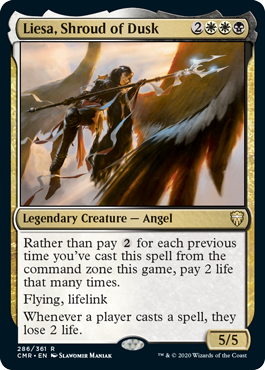
One of my favorite control decks to play in casual Commander is Liesa, Shroud of Dusk. I’ve built it as a Group Slug-style deck: spells cost life, attacking me costs life, having creatures enter play costs life, playing noncreature spells costs life, and so on. It really puts the death in Death & Taxes, and isn’t shy on Taxes, either. It’s what I like to call a “critical mass” kind of deck. These decks have an invisible clock, and once the door closes, you will struggle to achieve a victory.
They are distinct from Spellslinger decks in that they require permanents in play to win. As such, they can feel devastatingly oppressive if players don’t draw a board wipe, but are otherwise easy enough to handle if removal flows freely.
As the early-to-mid game progresses, you’ll find yourself questioning how much you should punish a deck like this by removing permanents, how often you should be attacking them, and how much you should actually care about the cards they’re playing.
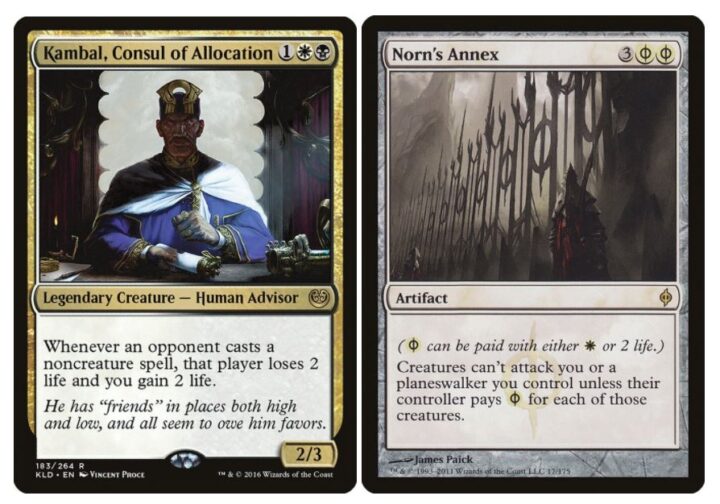
The decks that care about Kambal and Norn’s Annex, for example, will most of the time be wildly different. And so, too, are the control and combo decks you’ll be playing against that require this extra thought process. Some decks, like Liesa, lay their cards on the table. Others will be more elusive, choosing to put their stock in spells in hand. These are harder still to evaluate, and will often lead the players piloting them to have feast or famine kinds of games, as players either underestimate or overestimate their capabilities – and that’s just how it goes.
Anticipate, Don’t React

The easiest way to sum this up is in comparing Veyran and Rograkh. Both of these cards require a lot of mana to kill a player, and both can do so handily. But one does so in the open, while the other can strike from nowhere.
While it’s only natural that threat assessment varies from player to player and pod to pod, it’s wise to try and anticipate rather than react. Reacting emotionally to powerful cards without the wider context of a game is often a recipe for losing. What are you more afraid of: an Aurelia, the Warleader player with no Equipment in play and two cards in hand, or a Veyran player with eight mana and a full grip of cards? While that example has its edge cases, my point is that control and combo-based decks operate in the realm of the unknown, and your only weapon is the ability to calculate risk.
That Dratted Social Contract
What can complicate matters further is the social contract. In a lot of casual games, we approach Commander in a more social way. Whether we’re playing upgraded precons or stronger tuned builds, we’re in it for everyone to have a good time. How far your particular goodwill extends is completely up to you, but generally speaking, beating the person in last place into the stone age, attacking them for more than chip damage, or stopping them catching up is considered unsportsmanlike.
A few of examples in my regular playgroups are not blowing up a Sword of the Animist in a non-green deck until it’s mana neutral (two lands); not sending double digits of damage against the player who isn’t currently a threat; not making deals with someone who is not far ahead or at parity with you when other players are far behind.
The issue arises when these social elements clash with our evaluations of how strong a position a deck is in. While a lot of players can be comfortable declaring a player a threat when they have few permanents in play, to others, it can be considered a faux-pas to go after them too early, or to attack them repeatedly.
When your threat assessment was correct, but everyone else was content to follow the social contract, it can feel incredibly frustrating. That combo deck was a threat, and despite their protests, everyone should have been sending damage their way, because they just dropped an infinite out of nowhere. The invisible clock strikes doom, and the game is over. We’ve all been there, and it’s why I love the meme above so much.
There is no clear way to have a social game in which threat assessment is perfect. People will always disagree, they will always miss things, and your prophecies will in fact ring true from time to time. There never is a perfect game (when it comes to threat assessment), and the closest I’ve come is with fellow content creators who produce a metric boatload of EDH content and are in the zone as much as possible. What’s perhaps more relevant to those games, however, is not the well-tuned threat assessment – it’s the ability to not be salty about being attacked or having your stuff removed when you’re at parity or ahead, or when you look like you might have more going on than it might seem. It’s the ability to laugh about it and learn, and let me tell you – all of those players who learned great threat assessment learned it the hard way: from losing to things they had no idea how to handle the first time they encountered it.
Identifying the Invisible Clock
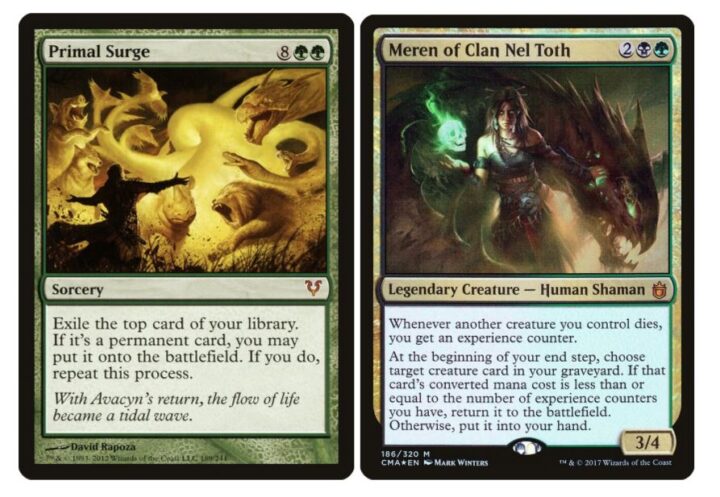
Not all Invisible Clock decks are easy to identify. While blue control decks with a Laboratory Maniac are a known quantity, and you can always expect a Pillowfort or Group Hug deck to have a way to win, other commanders and strategies can be less predictable. Primal Surge decks, for example, just need to get to ten mana to present a game-winning board state, either through combat or combo. This is hard to predict going in blind, but provided there’s a good Rule Zero discussion beforehand, you can keep this in mind going into a game.
The oft-nefarious and hard to pin down “Value” decks also have an Invisible Clock. They might not play a two-card combo, but they accrue value in such a way that they speed past other players exponentially until they have enough mana and resources to shut down any attempts at winning or eliminating them. Meren of Clan Nel Toth is a classic example, but more recent ones have been the likes of Omnath, Locus of Creation or Muldrotha, the Gravetide.
Ultimately, to beat these kinds of decks, you need to learn not to be shy about putting the pressure on. You also need to consider whether you can do that on your own, and consider conversing with the table if it’s required. While unbalanced pods are never what people aim for, they can be mitigated to an extent by cooperation in the face of an archenemy situation, when resources are imbalanced to a weighty degree.
While Invisible Clocks can feel pretty “big brain” when it comes to win conditions, it is important to be open about your deck’s strategy in Rule Zero discussions if you desire a harmonious and social game experience. People are far happier to lose to a hard-to-see-coming control or combo deck if they feel they’ve mulliganed appropriately and picked the right kind of deck to play against it.
Once you get good at playing against these kinds of decks, you’ll find yourself leading the discussions on threat assessment in your pods. And, what’s more, you’ll also be able to figure out when the optimal time to scoop is. Nobody ever wants to scoop in a game of Commander, but against a deck that has slowly and surely ground out your resources and left you on the back foot? It’s often correct to scoop sooner than you think.
If you’ve played any amount of Limited before – whether booster draft or Cube – you’ll know that your time is precious, and that if you’re on the back foot, it can often be correct to scoop and go to the next game so you can win the series. While EDH isn’t about winning, taking that mindset into games can give you back some of your time that could ultimately be spent on another fresh game of Commander. If the noose is closing and you have no outs, throwing in the towel isn’t a bad thing – the others knocked out in the pod might well thank you for unlocking a second game.
Thanks for dropping by for another article. I’ve had an enjoyable year sharing my thoughts, and I hope you have enjoyed reading them. It’s important not to be shy about attacking the deck that “isn’t doing anything” in Commander, if only to hear what excuses they can come up with. Just be sure that you’re not being overly mean in the process. 😉

Kristen is Card Kingdom’s Head Writer and a member of the Commander Format Panel. Formerly a competitive Pokémon TCG grinder, she has been playing Magic since Shadows Over Innistrad, which in her opinion, was a great set to start with. When she’s not taking names with Equipment and Aggro strategies in Commander, she loves to play any form of Limited.

